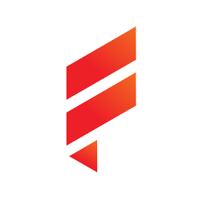Original Article: https://www.fiercewireless.com/wireless/its-not-fair-cry-orange-dt-telefonica-vodafone-about-hyperscaler-traffic
BARCELONA — Orange’s CEO Christel Heydemann made a splash at Mobile World Congress this week in a keynote on the first day of the event. She addressed “fair use,” a hot topic in Europe among four big telecom operators.
Basically, Orange, Deutsche Telekom, Telefonica and Vodafone are complaining that a few large over-the-top streaming companies are putting them in a financial bind. The operators say they must invest billions to continuously boost the performance of their networks in order to provide services that their customers demand. But meanwhile, it’s mainly Neflix and its kin that are benefitting from this arrangement.
Deutsche Telekom CEO Timotheus Hoettges also complained about the hyperscalers in his keynote at MWC.
Telefonica’s Chief Public Policy Officer Juan Montero Rodil outlined the fair use argument succinctly in a blog post in February.
“Shouldn’t largest traffic generators fairly contribute to the cost of delivering their traffic to end customers?” asked Rodil in his blog. “Video streaming, social media and gaming account for over 70% of internet traffic, with just six companies accounting for over 56% of total internet traffic.”
The offending companies are Meta, Alphabet, Apple, Amazon, Microsoft and Netflix. While Google looks like the worst offender, the report includes Google Search.

The European operators have been citing an Axon report to support their arguments for fair use.
The report says OTTs have no monetary incentives to ensure optimal generation of their traffic. For instance, during the early days of Covid when so many people were sheltering in place, the OTT providers voluntarily downgraded the quality of their services in Europe to accommodate the increased demand on networks. The Axon report says, “Despite the resulting supposedly lower quality streaming, consumers did not report any significant difference in their quality of experience.” But the OTT providers have since returned to their normal streaming standards.
The report also said that OTT providers have increased their usage of networks in other ways such as implementing auto-play features. This is where a new video automatically starts playing after a previous video has finished, without any proactive user engagement. “This may result in users generating unnecessary data traffic if they forget to stop streaming,” stated Axon.
The report says it’s unfair for the hyperscalers to keep adding more traffic to European networks without making any financial contribution. “Nowadays, Google, Facebook, Apple and Amazon are, each, larger (in terms of market capitalization) than the entire EU telco sector combined,” stated Axon.
RELATED: Netflix Korea becomes test case for net neutrality
European operators aren’t the only ones crying foul against the big American hyperscalers. In South Korea the government has debated whether companies such as Netflix and Google are free-riding on domestic networks and whether they should have to pay the country’s telecom operators. The topic of net neutrality has also taken center stage in Korea.
Topics: Featured, Wireless, Fair Usage





